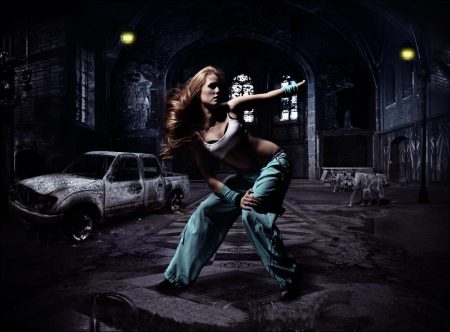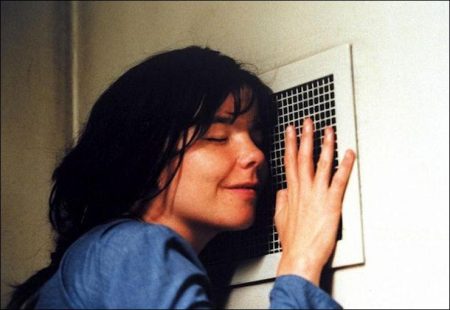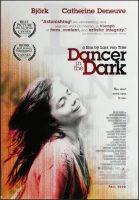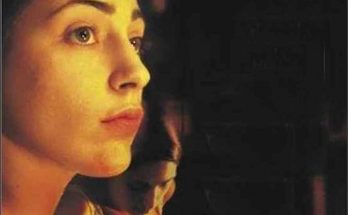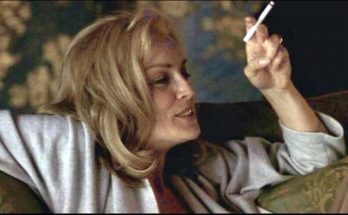Taglines: In a world of shadows, she found the light of life.
Dancer in the Dark movie storyline. 1964 in small town Washington state. Selma Jezková, a Czechoslovakian immigrant, and her preteen son Gene live in a rented trailer owned by and on the property of married Bill and Linda Houston, he the town sheriff. Beyond Bill and Linda, Selma has a small group of friends who look out for her, including her primary confidante, Kathy, with who she works, and Jeff who wants to be her boyfriend.
Jeff regularly waits outside Selma’s workplace long before the end of her shift to drive her home, despite she always refusing in not wanting to lead him on. Her primary job is working on the Anderson Tool factory assembly line, but she does whatever she can to earn money. What only Kathy knows among Selma’s friends is that she is slowly going blind, her medical condition being genetic. Selma is barely able to see, just enough to do her job. Her primary reason for moving to the US and for working all the time is to earn enough money for an operation for Gene when he turns thirteen, he who doesn’t know anything about his mother or his own degenerative eyesight.
None of Selma’s friends, not even Kathy, know about the money for Gene’s operation. Beyond this sole goal of the operation, Selma allows only one indulgence in her life, anything having to do with musicals, which she loves, it an escape from the problems of her life. Kathy often takes her to the cinema to watch old musicals, Kathy who has to describe to Selma what is happening on the screen much to the other patrons’ chagrin.
Selma also has the lead of Maria in a community theater production of “The Sound of Music”. Close to having enough money for the operation, Selma is in a race against time before she loses enough of her sight not to be able to work or participate in the musical production. What may also threaten Selma’s goal of the operation for Gene is some financial problems facing Bill. He feels pressured to provide Linda with the comforts of life to which she is accustomed that he believes she requires in their marriage to be satisfied, and as such he is reluctant to tell Linda of those financial problems.
Dancer in the Dark (Danish: Danser i mørket) is a 2000 Danish musical drama film directed by Lars von Trier. It stars Icelandic singer Björk as a daydreaming immigrant factory worker who suffers from a degenerative eye condition and is saving up to pay for an operation to prevent her young son from suffering the same fate. Catherine Deneuve, David Morse, Cara Seymour, Peter Stormare, Siobhan Fallon Hogan, and Joel Grey also star.
The soundtrack for the film, released as the album Selmasongs, was written mainly by Björk, but a number of songs featured contributions from Mark Bell and the lyrics were by von Trier and Sjón. Three songs from Rodgers and Hammerstein’s The Sound of Music were also used in the film.
This is the third film in von Trier’s “Golden Heart Trilogy”; the other two films are Breaking the Waves (1996) and The Idiots (1998). The film was an international co-production among companies based in thirteen countries and regions: Denmark, Argentina, Finland, France, Germany, Iceland, the Netherlands, Norway, Spain, Sweden, Taiwan, the United Kingdom, and the United States. It was shot with a handheld camera, and was somewhat inspired by a Dogme 95 look.
Dancer in the Dark premiered at the 2000 Cannes Film Festival to standing ovations and controversy, but was nonetheless awarded the Palme d’Or, along with the Best Actress award for Björk. The song “I’ve Seen It All”, with Thom Yorke, was nominated for an Academy Award for Best Song but lost to “Things Have Changed” by Bob Dylan from Wonder Boys. The film continues to polarize critics, being seen by some as melodramatic and by others as one of the most important films of the 2000s.
Dancer in the Dark (2000)
Directed by: Lars von Trier
Starring: Björk, Catherine Deneuve, David Morse, Peter Stormare, Udo Kier, Cara Seymour, Siobhan Fallon Hogan, Zeljko Ivanek, Jens Albinus, Mette Berggreen
Screenplay by: Lars von Trier
Production Design by: Karl Júlíusson
Cinematography by: Robby Müller
Film Editing by: François Gédigier, Molly Marlene Stensgaard
Costume Design by: Manon Rasmussen
Art Direction by: Peter Grant
Music by: Björk
MPAA Rating: R for some violence.
Distributed by: Fine Line Features
Release Date: December 8, 2000
Views: 85
